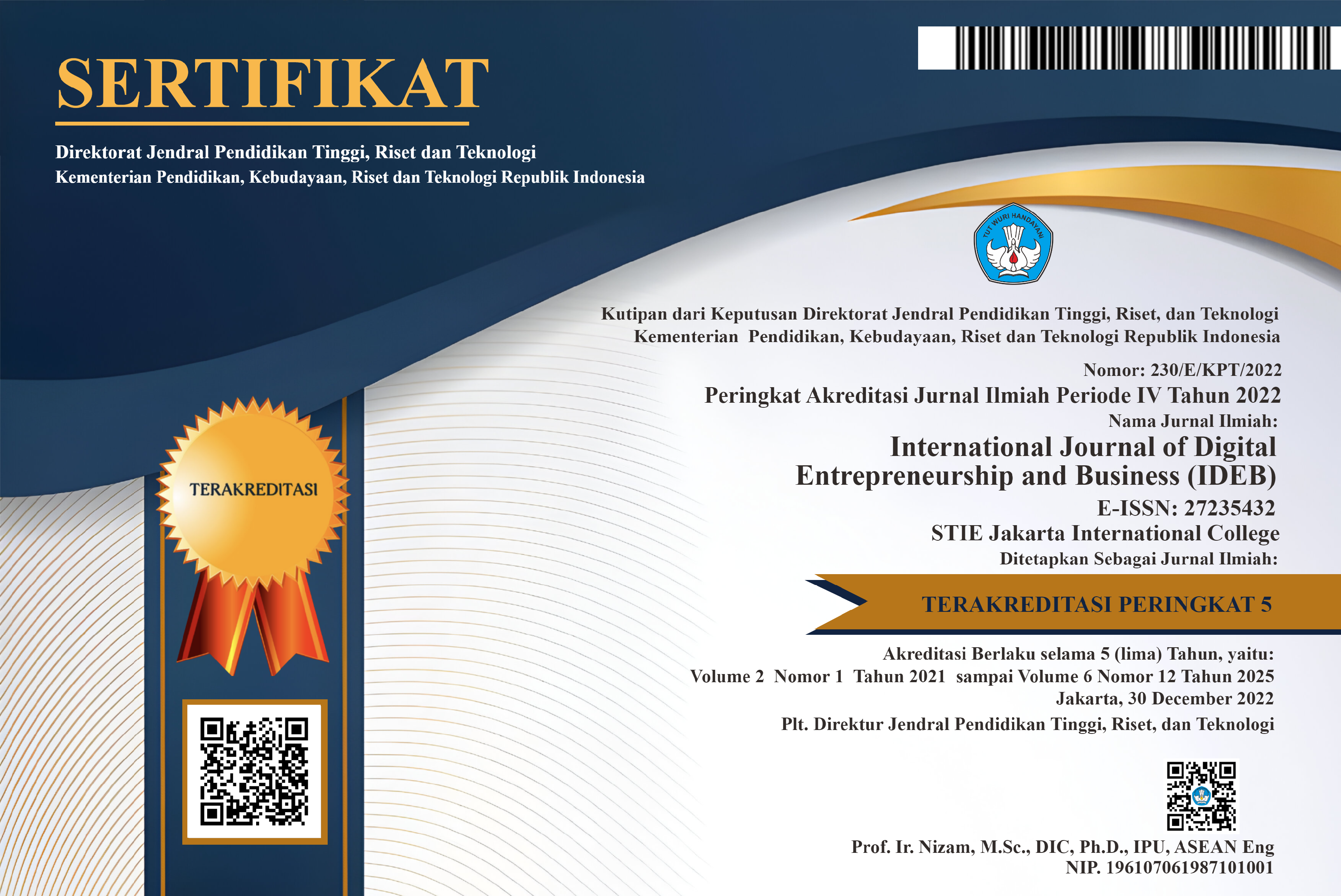Customer Orientation of Service Employees in Retaining Customers: The Mediating Role of Satisfaction and Commitment
DOI:
https://doi.org/10.52238/ideb.v6i1.278Keywords:
Employee service orientation, satisfaction, commitment, customer retention, Bank Syariah IndonesiaAbstract
This study aims to analyze the influence of employee service orientation on customer retention, with satisfaction and commitment as mediating variables at Bank Syariah Indonesia. The approach used was Structural Equation Modeling (SEM) through analysis using JASP software. The results showed that the model had a good level of fit, and all constructs were proven valid and reliable. Employee service orientation positively influenced customer satisfaction and commitment, which ultimately increased customer retention. Both satisfaction and commitment were shown to act as mediators, strengthening the relationship between service orientation and retention. In the context of Bank Syariah Indonesia, customer commitment emerged as a more dominant factor than satisfaction in maintaining customer loyalty. These findings emphasize the importance of enhancing service orientation based on Sharia values such as honesty, trustworthiness, and empathy in interactions with customers. Implementing services consistent with these principles will strengthen trust, create emotional satisfaction, and foster long-term commitment to Bank Syariah Indonesia
Downloads
Downloads
Published
How to Cite
Issue
Section
License
Copyright (c) 2025 Ifa Nafisah, Evi Susanti, Sumayyah Sumayyah

This work is licensed under a Creative Commons Attribution 4.0 International License.
 Abstract viewed = 83 times
Abstract viewed = 83 times












